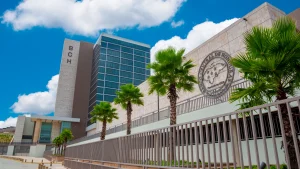Colonial Period of Honduras
The defeat of Lempira and the reduction of rivalries among the Spanish contributed to the colonization and increased economic activity in Honduras.
By the late 1540s, Honduras seemed to be heading towards development and prosperity with the establishment of Gracias as the capital of the regional Audiencia of Guatemala.
However, this decision created resentment in the more populous centers of Guatemala and El Salvador. In 1549, the capital of the Audiencia was moved to Antigua, Guatemala, and Honduras remained as a province within the Captaincy General of Guatemala until 1821.
The country’s first mining centers were located in Gracias. By 1538, these centers were producing significant amounts of gold. In 1540, this changed with the discovery of gold and silver in the Guayape River Valley.
This contributed to the decline of Gracias and the rise of Comayagua as the main center of Honduras. The demand for labor increased, accelerating the decimation of the native population. As a result, slaves from Africa were introduced to the country. Other gold deposits were found near San Pedro Sula and the port of Trujillo.
Mining production began to decline in 1560, and with it, the importance of Honduras. In the early 1560s, new silver discoveries briefly revived the economy, leading to the founding of Tegucigalpa, which soon began to rival Comayagua as the most important city in the province. The silver boom reached its peak in 1584, and economic depression returned shortly after. Mining efforts in Honduras were hindered by a lack of capital, labor, and the difficulties of the terrain. Mercury, vital for silver production, was scarce, in addition to negligence by officials.
One of the major problems for Spanish rulers in Honduras was the activity of the English in northern Honduras. These activities began in the 16th century and continued until the 19th century. In the early years, European pirates frequently attacked the settlements on the Honduran Caribbean coast.
In 1643, an English expedition destroyed the city of Trujillo, the main port of Honduras. Furthermore, the English made enormous efforts to establish colonies from the 17th century onward in the Bay Islands and northern Honduras with the help of the Sambos and the Miskito people who attacked Spanish settlements.
In the early 18th century, the Bourbon dynasty, linked to the rulers of France, replaced the Habsburgs on the throne of Spain. The new dynasty initiated a series of reforms throughout the empire designed to make the administration more efficient and profitable, and to facilitate the defense of the colonies.
Among these reforms, there was a reduction in the tax on precious minerals and in the cost of mercury, which was a royal monopoly. In Honduras, these reforms contributed to the resurgence of the mining industry in the 1730s. Under the Bourbons, the Spanish government made several efforts to regain control over the Caribbean coast.
In 1752, the fortress of San Fernando de Omoa was built. In 1780, the Spanish returned to Trujillo, which began to develop as a base of operations against British settlements to the east.
During the 1780s, the Spanish regained control over the Bay Islands and drove out most of the British and their allies from the Rio Negro area. The Anglo-Spanish Convention of 1786 finally recognized Spanish sovereignty over the Caribbean coast.




